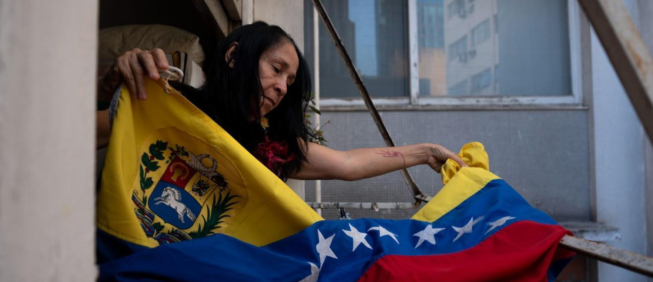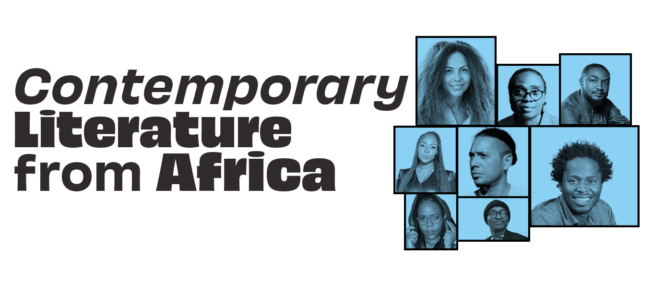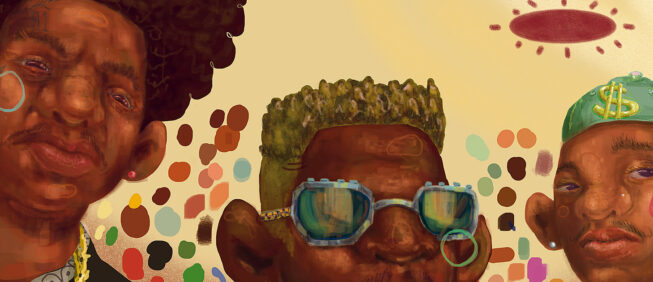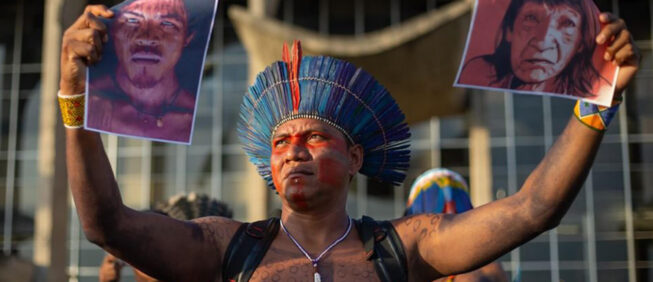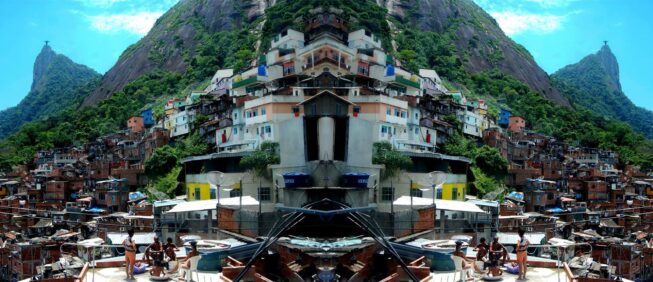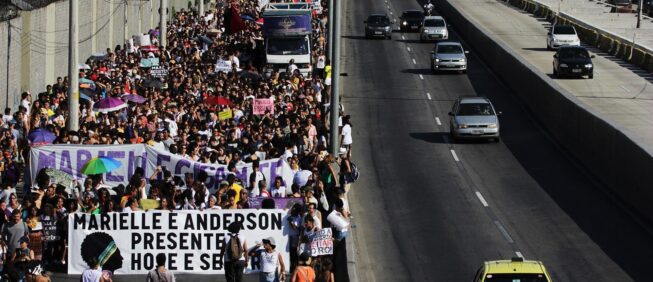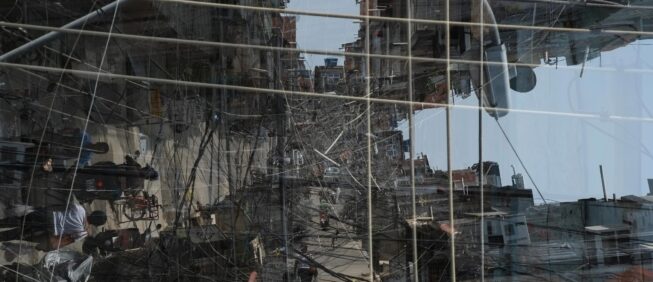Exchanging sticks for wings
Or when heroes are the reason for the crimes that binds imprison us
Murilo Gaulês | Cia dxs Terroristas
| Brazil |
April, 2023
“I grew up being beaten by my parents and I didn't die”
I've spent much of my adult life hearing that phrase, or something like it, from people of my generation. And for a while, I agreed with that – until I began to realize how difficult it was for me to express what I feel and how difficult it is for me to say NO. As I got involved in several abusive relationships, which included physical aggression, attempted murder, rape, I began to realize that my difficulty in expressing myself and this tendency to submit to any tough arm that was imposed on my body, to silence my (re)actions, as if there was an inertia button that was activated every time someone tried to silence me with violence.
I was beaten by my parents a lot, and I really didn't die. But I have anxiety and panic attacks. I am an insecure person and I often think that what I am producing is insufficient, that it is not enough, that it is below acceptable. I am going through that judgment right now, as I write this.
LGBTIA+ bodies get beaten all the time. And in a sad way, we learn to deal with pain (and get used to it). There is a sadistic pleasure in Christian cisheteronormative society in making our bodies the repositories of horror and purges of its frustrations. We live in Brazil, the country that has been killing the most LGBTIA+ people in the world for 14 consecutive years.
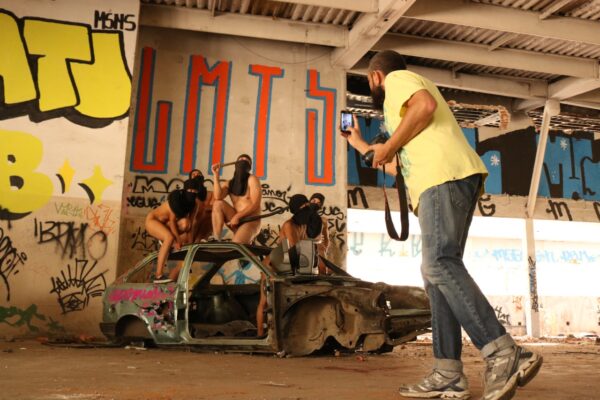
When we are born, we start being beaten to swallow our tears. And when we are separated through punishment from learning possibilities, experiences, dialogues and understandings that would allow us to assimilate the world through collective relations and exchanges of knowledge/desires, we begin to center our perception around our sense of security and self-preservation. I start to relate to the world through fear, and we can do horrible things when that fear is all that motivates us to move forward.
This punitive behavior is a Western European heritage, which arrived in our lands with the colonization process.
In Medieval Europe, people were mutilated, hanged, burned alive or beheaded in public squares to serve as “pedagogical” examples for others to learn what should not be done. In that period, prisons existed not as a punishment itself, but as a waiting hall for a sentence that would fatally culminate in homicide, public torture or mutilation. Such brutal practices lasted for centuries with strategic alternations in the refinements of cruelty applied to minoritized bodies.
We can remember, for example, the figure of Charles Lynch, who encouraged public executions of indigenous people and enslaved black people so that they would be used as an example when trying to rebel against their slaveholders. These executions were accompanied by cruel tortures that aimed not only to murder the victim, but to deform his/her body so that the remaining image (dismembered, burned, distorted) was displayed as a totem of servile obedience. Some historians claim that Lynch even produced postcards with illustrations of these deformed bodies and sent them to neighbors and friends, as a way of spreading his message to other territories. This is where the term “lynching” comes from.
Black people were enslaved, raped, tortured and sold as objects because Western Christian mentality had it that these people did not have a soul.
LGBTIA+ people have been and still are massacred by a shallow and selective reading of the book of Leviticus 18:22.1“You shall not lie with a male as with a woman; it is an abomination.”
Indigenous people are deprived of their lands because they are considered lazy and unfit for the work that — according to the same Christian morality — dignifies humanity.
Immigrants and refugees are exploited and imprisoned for being perceived as terrorist criminals who left their homeland to take another nation's resources for themselves.
See how narratives are central to morally justifying the application of punishments on bodies historically marked to die. This dramaturgy of death needs to prescribe the social legitimacy that places the people in favor of these practices, shouting: You deserved it!
Over time, these death narratives need to be updated to incorporate elements that dialogue with contemporaneity, perversely appropriating the social advances promoted by popular mobilizations of dissident bodies in struggle.
Therefore, these extermination practices carried out by Western imperialists underwent adaptations and gave rise to what we understand today as prison systems. Prison ceased to be an interval between conviction and punishment, and became the punishment itself.
This happens as a result of three distinct movements: the consolidation of capitalism, the new social ethics established by the European Enlightenment, and the organization of nation states.
The ethics of the Enlightenment, which brought about the collapse of monarchies and the rise of republics, posed a rational humanity, which was organized and perceived from European philosophy, segregating spirituality and experience through the body as minor things, compared to the intellectual magnitude of theoretical science. This reflection began to trivialize court executions as primitive behaviors, given that this literally visceral exposure of subaltern bodies violated the polished aesthetics of Enlightenment rationalism.
The grotesque images of executions and their gore aesthetics, caused by the mortal remains being scorched or dismembered by hooded executioners, went against the grain of the new ideal of civilized humanity. So, it was necessary to create a new alternative to perpetuate the European punitive pedagogy, without the new ideals of the time putting it in check. The result can be translated into the popular phrase “arrest them, but do not kill them”.
The development of capitalism as a regulator of production and consumption relations brought to light a new concept of the value of work. It is much more profitable to have subordinates working precariously to support the capitalist elite than to have them dead. That is why the first prison models are concentration camps for slave labor, represented in several films and works of art by the iconic image of racialized men in striped clothes breaking stones with sledgehammers.
Finally, the constitution of National States meant the creation of a regulatory body that legitimized the right to imprison subaltern bodies, considering that these same States became responsible for social order and for choreographing “peace” among humans.
This phenomenon established – at least in privileged bodies – a sense of balance, where justice seemed to have managed to balance its scales. After all, facilities would serve as deposits for bad people, separated from life among the good citizens, without generating the burden for that this society of morals tot bear the painful title of genocidal.
To reinforce this false sense of security, a series of pop culture productions started appearing in different medias, portraying a narrative of punitivism as a necessity for maintaining order. I'll give an example:
Regardless of the generation they were born into, or what age they are, anyone living on this earth must have already read or heard about Batman, the superhero from DC Comics created by Bob Kane and immortalized in movie theaters by renowned Hollywood actors like George Clooney, Christian Bale, Ben Affleck and, most recently, Robert Pattinson. Batman is the secret identity of Bruce Wayne, a millionaire orphan who had his parents murdered when he was very young and decides, after a long training journey with a League of Assassins, to become a vigilante who wants to bring peace to his troubled and violent Gotham City.
To do so, Wayne relies on a state-of-the-art arsenal of non-lethal weapons to contain the multitude of deranged thugs that make up the urban nightmare that is the city. The overwhelming majority of us grew up with the imagery of this heroic figure present at some point in our lives. And, not infrequently, when faced with the tense narratives of his stories, we found ourselves hoping that the Dark Knight could bring his villainous antagonists to justice, so that this would bring us a sense of redemption for all the evil that such crazy people caused to the good citizens of Gotham. But have we ever stopped to think that it is precisely Bruce Wayne's unlimited wealth that fosters social inequality and poverty for tens of thousands of families in Gotham? Wayne and his family are primarily responsible for the widespread violence in the city and the way he decides to deal with it is to carry out what he believes (and propagates) to be justice.
Bruce Wayne follows the same code of conduct as the capitalist-punitivist society of our times: he doesn't kill criminals. He arrests them! He imprisons his opponents in dehumanizing spaces, which treat their inmates like animals, with terrible food conditions, beatings, punishments, compulsory medication, social isolation...
Batman is an iconic symbol of the punitive society. He represents the figure of the elites who impoverish the population and put them in precarious situations of survival, turning them into animals driven by hunger and the insanity of those who live in a consumer society without the power to consume. And when these bodies rebel, or react to the cruel upbringing they had, excluded from access to nearly everything, they are punished by these same elites that society applauds as heroes.
In his most recent film, The Batman (2022), the first line of the protagonist character is: “I am revenge”. And this is exactly where the danger lies. We live in a society where justice and revenge are treated as one.
We live in a society where justice and revenge are treated as one.
It is very common among those who don't know any better to hear and believe reports (without any experience) of how prisons are true resorts for bums who are there being fed by the state. “They eat, drink and sleep on the government's money” – they say. Funny that, despite this mythology of prisons as “Neverland where no one needs to grow up or work”, these same unsuspecting people seem to have an absurd fear of the prison system. Nobody wants to go to that resort!
The truth is that prisons are one of the most refined strategies of contemporary capitalism. This is because they manage to carry out the eugenic project of the elites by removing unwanted bodies that do not make the wheels of the market turn from the streets and still keep them producing profit.
Since 2019, I have been experiencing penal abolitionism as a strategy to fight for dignity and common well-being in the urban context. It is prisons and the fear of them that silence and tame our reactions of rebellion and insurgency, which could challenge the powerful who keep us on the floor, below them.
Since 2019, I have been experiencing penal abolitionism as a strategy to fight for dignity and common well-being in the urban context. It is prisons and the fear of them that silence and tame our reactions of rebellion and insurgency, which could challenge the powerful who keep us on the floor, below them.
And in these years, between trips to temporary outings and working with survivors of the prison system, I have collected stories that help to understand the urgency we have, as humanity and a progressive society, to put a definitive end to prisons and punitivism.
When we started the Cia dxs Terroristas, we were very young, some even younger than you would expect to find in an activist group. The idea of facing the bars of the prison system and its consequences for the maintenance of contemporary slavery capitalism did not even cross our minds. But our first movements were in search of freedom. For the right to come and go being who we are. And, for that, once we understood that we were isolated, we started to map out our peers to form our first little big battalion.
One of the terrorists had arrived for our rehearsal looking outraged. I asked what had happened, and she said, “Did you see the news? That Bolsonaro guy gave another interview stating that leftist groups want to establish a gay dictatorship in Brazil. This guy is clueless.”
We looked into each other's eyes as we listened to the story, laughing at times at this lame joke that would later become the president of Brazil, thinking creatively about it. At a given moment, someone shoots: “What if we had this gay dictatorship, then? It might even be fun to imagine what it would be like if, for a few moments, the cisheteronorm changed places with us and had to feel our ‘snowflake sensitivities’ on their own skin.
This conversation turned into the DitaduraGay project, which consisted of performing “gay dictatorships” in cisheteronormative spaces in the north of São Paulo. We held LGBTQ 2https://www.youtube.com/watch?v=5IeHUE-QYOY women's marches at the doors of Neo-Pentecostal churches, performances 3https://www.youtube.com/watch?v=NoLzq-osW-s ; https://www.youtube.com/watch?v=rRUWhFtaM8A, a festival 4https://www.youtube.com/playlist?list=PLgMtWkqOwc5ZzQ6DfGIp2LP_76lSM0dC_, and offered autonomous production and creative production workshops in spaces with vulnerable LGBTQIA+ people.
For these last actions, we arrived at the Zaki Narchi homeless shelter, where we met the Valérias collective. It is a group of trans and travesti women who were organized in the fight for housing and who carried with them the name of a companion who had been murdered in that same mixed shelter in a transphobic attack.
It was in this process of living with the Valérias that we turned our gaze to the prison system. Practically all the sisters who were with us had spent time in prison and carried with them the double difficulty of achieving social insertion and in the job market because they had the double stigma of travestis and criminals. Already equipped with working technologies built over the years at CiA, we met researcher Victor Serra, who also writes in this issue of Periferias 7, and who brought us his research and experience about the incarceration of trans women.
Cia dxs Terroristas had already understood that one of our focuses of expertise was to transform dreams, daydreams and research methodologies into modes of direct action and that was exactly what we did. Serra's work became the project TRANSgressoras, ou Como Recuperar o Fôlego Gritando, contemplated by the 4th edition of the Lei de Fomento à Cultura das Periferias da SMC/SP (Law to Foster Periphery Culture). In this project, we redistributed cash grants so that a group of 24 trans women and travestis who survived prison could take art training in order to produce aesthetic-political content that denounced the violations of rights that the State had provoked on their bodies through prison.
If, on the one hand, art training fostered expressive repertoires that enabled these women to report in the first person, on the other hand, it was a space for technical training that guaranteed a source of income to some of them, or the achievement of decent employment.
The materials produced 5https://open.spotify.com/show/47Oc1a7lsCQt8AtZZRg4W5 ; www.ciadxsterroristas.com/transgressoras reached the commission that investigated violence against transgender people in the city of São Paulo, at the invitation of councilor Erika Hilton (PSOL), on two occasions: to denounce the mistreatment that these women suffered in a specialized shelter (which culminated in the dismissal of the team responsible for theses abuses) and to discuss the conditions surrounding the imprisonment of T women in temporary prisons in the municipality.
From these stories, we could enumerate an endless universe of urgent debates, which would quickly lead us to the conviction that the prison system is a failed practice of torture that needs to be extinguished if we still want to maintain what remains of our humanity. But as a text cannot account for all the multiple contradictions that exist in social relations, what I bring some perspectives based on gender markers, as I choose to highlight the specificities that affect the bodies of trans/travestis women in prison.
I bring these previous reflections with a broader context on the prison system, as it would be incoherent and politically fragile to execute this cut without first opening this historical cartography to lead us to two fundamental statements that support the debate that will follow here:
1 – Every arrested person is a political prisoner
2 – Every arrested person is stripped of their humanity and subjected to profound pain and torture.
It is worth remembering that it is not their so-called “crimes” that lead a person to prison, but social markers such as race, gender and class.
If that were not the case, then why would Rosângela Cibele go to prison for stealing two packages of ramen noodles, a 600ml Coca-Cola bottle, and a package of powdered juice, while Thor Batista, son of millionaire Eike Batista, ran over and murdered a cyclist while drunk driving, without even spending a night at the police station?
Why would travesti Janaína Adans have to lose almost two years of her life in a male penitentiary for carrying 8 grams of marijuana and two packets of cocaine, while Aécio Neves gets involved in a trafficking case with a helicopter with 500 kilograms of cocaine paste and becomes a State Representative?
These are just some of the countless examples we can give to affirm that the prison system operates based on social markers of inequality and not on the logic of crime as a prerequisite for punishment.
Today, Cia dxs Terroristas is responsible for the House of F.U.R.I.A. (Unified Front of Intersectional Abolitionist Resistance), where we can offer a welcoming space, creative production, and income for LGBTQIA+ prison survivors.
"There are those who claim that the kite is a Chinese invention dating back more than 3 thousand years. Aulus Gélio, a Latin grammarian, wrote in Attic Nights that Archytas of Tarentum, a mathematician friend of Plato, invented the first kite. The Hindus, Polynesians, Phoenicians or Egyptians were the inventors. The conclusion I come to is that different civilizations invented and flew kites. Or I rave that kites are older than men and they invented us so someone could fly them”. (Luiz Antonio Simas)
I can't say which came first. I suspect that just as kites invented men for them to fly, our collective too was forged by the situation. It was the need to invent and be creative in the face of the adversities imposed by the white and classist cisheteropatriarchal system that forged us and, in response to it, we developed our practices of terrorism. If this is good or bad, I can only say that we move forward, armed with our repertoires and partners, in the belief that one day our daydreams will gain flesh and we will be able to see a world without prisons. Until then, we keep creating and attacking the system, exchanging sticks for wings.
